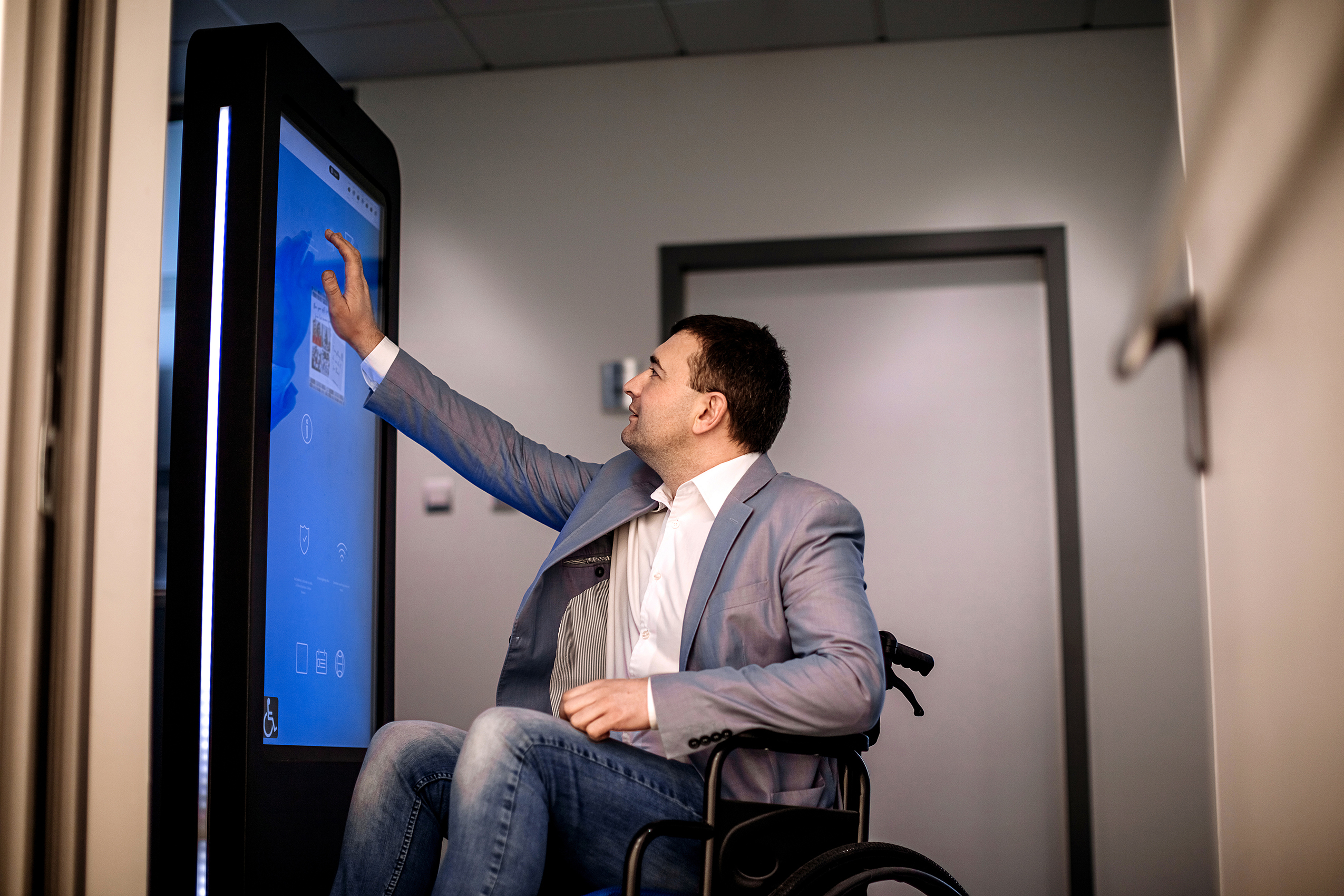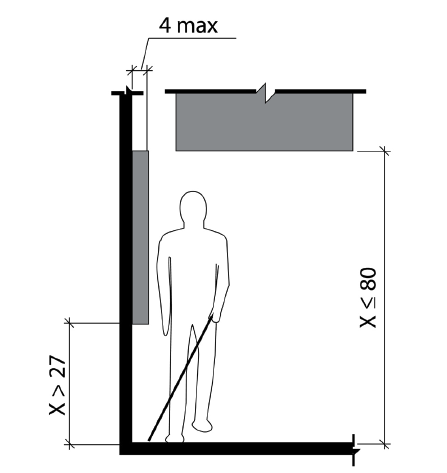It’s inevitable. At every trade show, guests ask if a solution is compliant with the Americans with Disabilities Act (ADA). While that’s a great sign that integrators are aware of the law, it’s also a bit of a tricky question. There is no such thing as an “ADA-compliant” solution.
Why? Too much goes into an AV project to be able to state whether the solution adheres to the guidelines once it's installed. A 2-inch deep mounting solution works for displays of all sizes, including displays deep enough to cause ADA non-compliance. On top of that, a mounted display may be compliant when positioned flat but out of compliance when tilted out. So, there’s no way to call the mount itself ADA compliant.
Regardless, the question of ADA compliance is vitally important. Protrusion limits are one of the most important ADA requirements AV professionals must follow, protrusion limits are about safety. Walking into an unexpected obstacle can cause serious injuries.
There are other ADA physical requirements to be aware of for the AV industry. We cover them in detail in our guide, “ADA in AV: Making AV Technology ADA Compliant.” Be sure to download a free copy for a deep dive into all the intersections between AV and ADA.

This blog is the first of a four-part series about various aspects of the Americans with Disabilities Act that AV professionals should know to be within the law. In this post, we’re talking about the ADA's guidance on physical dimensions when designing and installing an AV system.
For Kathryn Gaskell, Director for Eco-Design and Regulatory at Legrand | AV, designing for accessibility is all about developing an expanded mindset.
“You need to understand who is going to use that space and what their goals are for that space,” she said, encouraging industry professionals to “really dive into design thinking and make systems work for all people.”
To do that – designers must follow the physical requirements of a space when creating an AV system. In spaces used by a wide range of people, that means placing operable parts within reach and choosing controls that can be usable with one hand. Step mats, IR sensors or automatic tracking systems can augment conferencing systems to create an equitable experience for every user.

Specific Rules By the Numbers
4: Objects in a circulation pathway must be no more than 4 inches from the wall if they are between 27 and 80 inches from the floor. This ensures people using white canes can detect an obstacle. If you find your installation exceeds the limit, one workaround is to add an AV credenza or other permanently fixed furniture below the protrusion (and below 27 inches from the floor) to keep anyone from bumping into it.
To make installation easier when specifying displays, look for models under 2 inches deep to accommodate for the mount if possible. If you are looking at an interactive display, you may want to plan for extra time to do a recessed installation or add furniture as described above.
48/15: Locate switches, controls or other touch-enabled equipment that users need to access between 48 and 15 inches from the floor (even overhead projection screen drawstrings). The 48-inch limit may be lower if there’s an obstacle in front of the control.
28/34: The tops of ADA-compliant work surfaces must be between 28 and 34 inches above the floor. This applies to AV when choosing lecterns, conference tables, instructor tables and teaching stations. Also make sure there are 27 inches of clearance from the floor for knee space after installing any supporting equipment underneath the surface.
Gaskell had this advice for under-table storage: “Maybe you place it in the middle of the table a bit deeper. It might be hard to install at first, but there are lots of solutions that let you install brackets and populate the storage panel elsewhere before final placement.”
12: For post-mounted objects such as a display on a stand, the leading edges can protrude up to 12 inches into circulation paths. Beyond that, you’ll need to add some guardrails or other barriers.
80: If your installed equipment is more than 80 inches from the floor, you are in the clear!
27/9: Knee and toe clearance is important for AV professionals to consider when setting up workstations and work surfaces. The knee clearance requirement is 27 inches above the floor and at least 11 inches deep. Toe clearance has to be 9 inches high between 17 and 25 inches from the edge of the desk. This rule has a lot of variables at play, so be sure to check the ADA guide Section 306 for more granular details.
30x48: There should be 30 inches by 48 inches of clear floor space in front of any accessible item. For instance, if someone places a lectern too close to a wall, it does not comply. More space is always better.
1:2: For on-floor equipment like overfloor raceways, when the change in level goes between 0.25 inch and 0.5 inch, the slope should not be steeper than a 1:2 ratio. Be sure wheelchair users can move over cables safely with on-floor or under-carpet cable management.


Listen to the full interview with Kathryn Gaskell at The Download Podcast.
Other Tips
- Remember to plan for sightlines and image size, especially in larger venues. Ensure sightlines are maintained for people in wheelchairs even when people are standing around them.
- Make it a practice for users to push full-motion mounts back against the wall when done.
- Consider accessibility for AV installations from the initial design, including appropriate capital needs to make these spaces equitable.
Never Forget This
“It’s best to contact your local inspector,” Gaskell said. “You need to be on the same page of what they are looking for and what their requirements are. Make sure you are adapting to the local code appropriately.”
Consider this blog series a companion piece to Legrand | AV’s publication “ADA in AV: Making AV Technology ADA Compliant.” The free guide is the most comprehensive publication specifically for the AV industry about the ADA that we know of. Visit www.legrand.com/ada to find the guide and other free resources on this topic.
This blog series is intended to be used for educational purposes only. The intent is to serve as a guide to ADA regulations pertaining to the installation and usage of audio visual technology. However, none of it shall be construed as legal advice, nor should you rely on this content without obtaining your own project-specific verification.
Those seeking additional details or legally accurate definitions of the ADA’s audio visual technology requirements should contact www.ada.gov.
ADA Blog Series Part 2
The Big Picture

ADA Blog Series Part 3
What's the Frequency AV?

ADA Blog Series Part 4
Real World Results

Explore ADA Resources

Get the ADA in AV eBook

Take ADA Courses at AV University

Learn More at the Podcast


